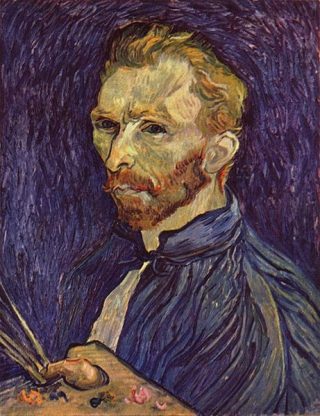Blog: World Bipolar Day
World Bipolar Day is celebrated each year on 30th March. At the Wellcome Centre for Human Neuroimaging, our researchers are investigating the brain mechanisms which drive bipolar disorder, to help predict future manic and depressive episodes.
On the 30th March 1853, the Dutch post-impressionist painter Vincent Van Gogh was born. Van Gogh had a notoriously difficult life. He is believed to have lived with an episodic mental health condition, punctuated with periods of normal functioning.
It is now widely believed that Van Gogh was experiencing bipolar disorder. Today, every year on his birthday, we celebrate World Bipolar Day.
Bipolar disorder is a type of mood disorder, characterised by highs and lows in mood, called mania and depression. During a manic episode, people might feel very energetic, overactive, and pursue more goals and activities than usual. In contrast, depressive episodes feature lethargy, low mood, and less interest in goals and activities.
People usually imagine the two mood states as separate and opposite: the soaring highs versus the miserable lows. However, people with bipolar disorder can also experience “mixed affective” episodes, where manic and depressive symptoms occur at the same time. Some with the disorder also experience these changeable moods even outside of episodes.
Our understanding of bipolar disorder has advanced remarkably since Van Gogh’s time, but there still questions left unanswered. Many scientists believe that bipolar disorder arises from extreme fluctuations in the brain’s “reward system”. This system controls how people respond to the possibility of a reward. When we know that a behaviour is likely to result in a positive pay-off, we work harder to carry out that behaviour. A prominent theory is that people with bipolar disorder experience temporary increases and decreases in this reward system, which result in mania and depression, respectively. However, the neurobiological mechanisms that might drive these changes remain a mystery.

At the Wellcome Centre for Human Neuroimaging, researchers in the Decision and Emotion team are attempting to address these gaps in our understanding. In 2017, they argued that complexities in the presentation of bipolar episodes mean we need to rethink how the disorder develops.
Liam Mason, Eran Eldar and Robb Rutledge developed a computational model which describes how a person’s current mood affects how they react to good and bad events. For example, a surprise reward (such as winning £100 on a scratch card) is likely to put someone in a positive mood. This then colours how they view subsequent rewards, perceiving them as more valuable than they actually are. In contrast, when someone is in a negative mood, they will perceive rewards as being less worthy than the reality, leading them to pursue goals less enthusiastically.
Having a moderate so-called “mood bias” can be beneficial, as it helps people adapt quickly to our ever-changing experiences, whether conditions are improving or worsening. However, in people whose moods influence their perception of events too strongly, normal mood fluctuations are amplified. They may experience cycles of escalating moods, potentially resulting in extreme behaviours, like taking bigger risks than they usually would.
The computational model predicts that people with a high mood bias are at a higher risk of developing bipolar disorder. The stronger the mood bias, the more severe manic and depressive episodes, and the less time in remission in between.
The model also offers an explanation for why some people with bipolar disorder experience more mood instability, both within and between episodes.
But the team isn’t done yet. As part of The Happiness Project, our researchers will be testing patients with bipolar disorder by asking them to play games on their smartphones. The researchers are interested in whether bipolar disorder is associated with a stronger influence of mood on learning. Ultimately, this might help them predict future manic and depressive episodes, and improve the lives of people with this disorder.
Anyone can download The Happiness Project smartphone app from the Apple app store or the Google Play app store to contribute to our ongoing research. The more games people play, the more our researchers can learn about happiness works in everyone.

To read more about World Bipolar Day and the vision to raise awareness and eliminate stigma surrounding bipolar disorder, click here.